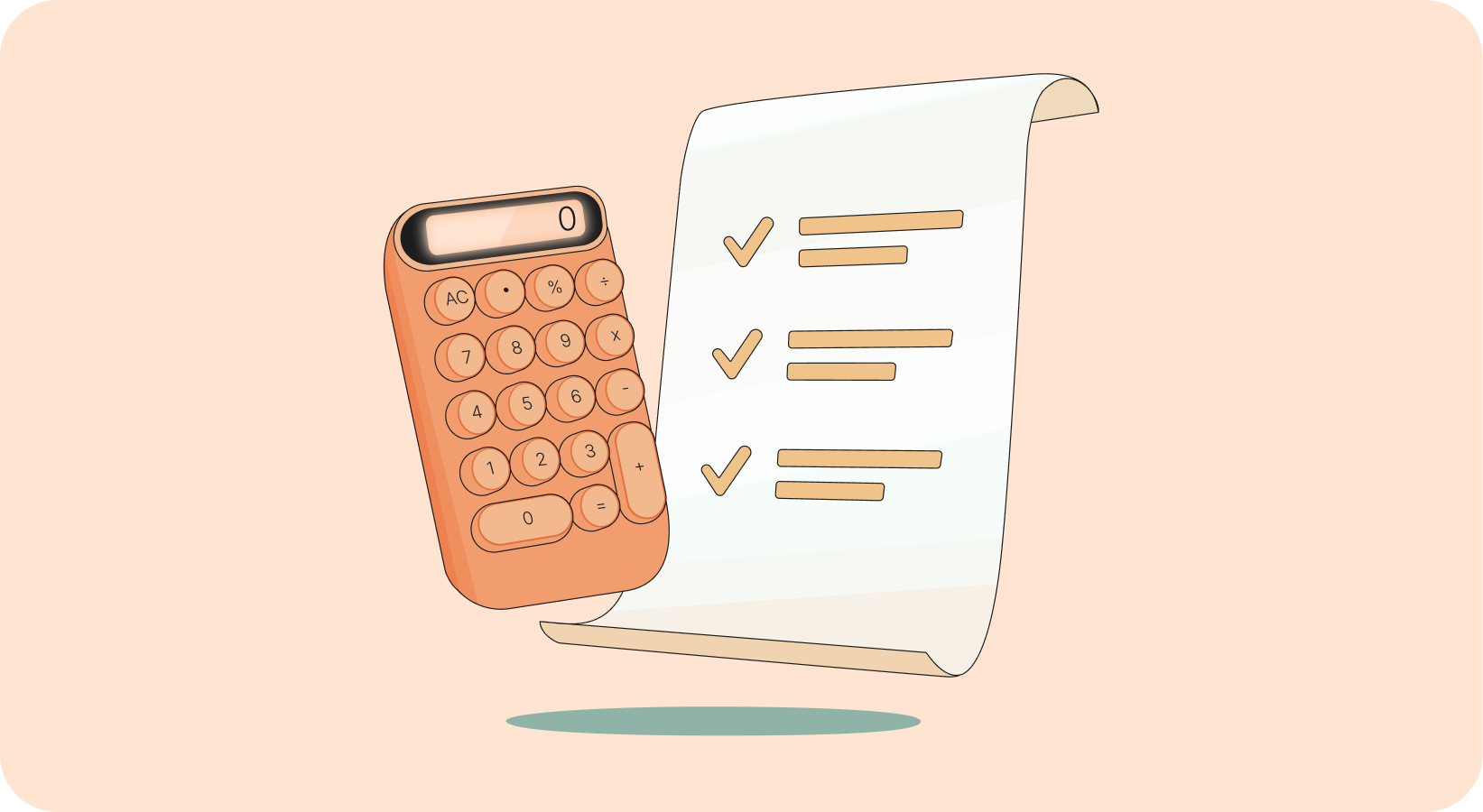Claiming deductions for your therapy practice reduces your tax burden. But in order to benefit, you need to understand which expenses qualify, where to deduct them on your return, and how to keep accurate records so you won’t run into trouble in the event of an audit.
Consider this your complete guide to tax deductions for therapists—including the difference between tax deductions and credits, the latest changes to tax deductions for 2025, and how to take advantage of deductions before the end of the fiscal year.
But first, the basics.
What is a tax deduction for therapists?
Your therapy practice benefits from a tax deduction when you report a deductible expense on your tax return. A deductible expense is any cost you incur in the course of doing business that can be wholly or partially deducted from your taxable income.
On your tax return, you report your gross revenue or income, then subtract your deductible expenses to find your taxable income. Your federal income tax and self-employment tax are calculated as percentages of your taxable income. The rate at which your income tax is calculated depends on the amount of your taxable income and which tax brackets it falls under.
State and municipal taxes are also based on your taxable income. These vary from state to state and locality to locality. You can check out our guide How to Pay Income Tax in Every State as a Therapist for a deeper dive. This guide mostly focuses on federal taxes.
Net income vs. taxable income
The terms “net income” and “taxable income” are sometimes used interchangeably. In reality, your net income, as reported on your annual profit and loss statement (P&L), may be a different amount than your taxable income.
That’s because not all business expenses are 100% deductible. For example, you may only deduct 50% of the cost of qualifying business meals from your taxes. As another example, depending on the calculation method you use, the total amount you are able to deduct in home office expenses from your taxes may be less than the amount you actually spend on your home office.
Business deductions vs. personal deductions
Business expenses you deduct are different from tax deductions on your personal return.
That applies regardless of your business structure: When you are a sole proprietor, your person and your business are identical for tax purposes. But your personal deductions and your business deductions are reported on different forms.
There are two types of personal deductions. Above-the-line deductions determine your adjusted gross income (AGI). Other personal deductions—plus business deductions, if your business is a pass-through entity—are then subtracted from your AGI to determine your total taxable income.
Above-the-line deductions include retirement savings contributions, student loan interest, and medical expenses. They are calculated on Schedule 1 of Form 1040.
Itemized deductions (or the standard deduction) are subtracted from your AGI after above-the-line deductions have been applied. You can choose either to itemize these (calculate and report each deduction) or claim the standard deduction (a flat rate based on your marital status and whether you are filing singly or jointly).
Itemized deductions include charitable contributions, investment losses, and certain educational expenses.
In contrast to above-the-line and itemized deductions, business deductions are based on the expenses you incur running your business. They are reported and calculated on Schedule C of Form 1040, and then subtracted from your AGI after itemized deductions (or the standard deduction) have been applied. You can only deduct business expenses on your personal tax return if you are a sole proprietor.
Tax deductions vs. tax credits
Tax deductions and tax credits for therapists both reduce the amount you pay in taxes, but they operate differently.
Tax deductions reduce your total taxable income—you deduct them from your AGI and the resulting amount is used to determine the taxes you owe.
Tax credits, on the other hand, are subtracted directly from the amount owing. For instance: if, based on your income, you owe $25,000 in federal taxes, and you qualify for a $1,000 tax credit, the amount you owe is reduced to $24,000.
For a closer look, and a complete list of tax credits your therapy practice may qualify for, check out The Complete Guide to Tax Credits for Therapists.
{{resource}}
How to qualify for business tax deductions
Any business or self-employed individual may claim tax deductions. But that doesn’t mean you are free to deduct any expense from your taxes.
First, the expense must be ordinary and necessary. Second, before you claim it on your taxes, you should make sure you have a suitable record of the expense.
Ordinary and necessary expenses
In the words of the IRS:
To be deductible, a business expense must be both ordinary and necessary. An ordinary expense is one that is common and accepted in your industry. A necessary expense is one that is helpful and appropriate for your trade or business. An expense does not have to be indispensable to be considered necessary.
To break that down:
- For an expense to be ordinary, it should be common in your industry.
- Example of an ordinary expense: A computer microphone so you can better treat clients via telehealth.
- Example of non-ordinary expense: Guitar lessons, in case you decide to record an album about your experiences as a therapist.
- For an expense to be necessary, it should be helpful and appropriate, and not extravagant.
- Example of a necessary expense: A mid-range computer microphone sufficient for telehealth, costing about $100.
- Example of an unnecessary expense: A home recording studio costing about $8,000.
The IRS is on the lookout for business owners writing off personal expenses as business expenses. Keep that in mind when planning your purchases.
Tax deductions and recordkeeping
For any expense you deduct that totals $75 or more, keep receipts or other proof of purchase on your records.
Keep the total amount in mind. A $100 computer microphone is a no-brainer—you should keep the receipt. But small purchases can add up to a large total. Coffee with business associates may cost only $10. But if you meet eight times over the course of the year, that brings your total deduction to $80. If you claim it, plan to have receipts to back it up.
In the event of an audit, the IRS can request receipts to back up your past three years of deductible expenses. If they suspect fraud, they can request another three years’ receipts—for a total of six years’ worth of financial records.
If during an audit you can’t provide a receipt proving you paid an expense, you will be required to pay the difference—the amount you wrote off your taxes for the purchase—to the IRS. You may also be required to pay penalties.
Check out How to Track Expenses for Your Therapy Practice for guidance setting up a recordkeeping system that works for you.
How to file tax deductions
Tax deductions are filed as part of your regular federal tax return, and they are used to determine your taxable income. Which forms you file—and their deadlines—depend on your business structure.
Tax deduction schedules and forms
- Sole proprietors: Deduct your expenses from your gross income to determine your net income on Schedule C of Form 1040. This amount flows to Schedule 1, line 3 (“Business income or loss”) and then to Form 1040, line 8 (“Other income”) where it is included in your total income. You also report this amount on Schedule SE, where self-employment tax is calculated.
- S corporations: Your S corporation deducts its expenses from its gross income on Form 1120-S. Your share of the S corp’s total net income is reported on Schedule K-1. This amount flows through to Schedule 1 and then line 8 of Form 1040.
- Partnerships: The partnership deducts its expenses from its gross income on Form 1065. Your share of the partnership’s net income is reported on Schedule K-1, which you then enter on Schedule 1 and then line 8 of Form 1040.
- C corporations: A C corp deducts expenses from its gross income on Form 1120. Its net income does not pass through to shareholders. Instead, shareholders may receive dividends on stock they hold, or they may be paid an income as employees of the corporation.
Tax deduction filing deadlines
Tax deductions are filed as part of your annual business tax return.
- Sole proprietorships and C corporations: April 15th, or the next business day if April 15th falls on a weekend or holiday.
- S corporations and partnerships: March 15th, or the next business day.
Deductions and quarterly estimated taxes
If your business is expected to owe $1,000 or more in federal taxes, the IRS typically requires you to file quarterly estimated taxes.
If you underpay your taxes—if your total payments amount to less than what you owe—the IRS may charge you interest on the unpaid amount. You can avoid this penalty by following the safe harbor rule, paying either:
- 90% or more of the amount you owe for the current year; or
- 100% of what you paid last year (110% if your AGI is $150,000 or greater)
Keep in mind, though, that overpayment can also be a problem, particularly in years when your total tax burden is less than it was in the past.
For instance, if your total quarterly payments come to $30,000, but you only end up owing the IRS $25,000, you will get a $5,000 tax refund. But until you receive the refund, you can’t use that money—effectively, it’s an interest-free loan to the IRS.
Deductions because of increased expenses or large purchases may lower your tax bill. That’s a good thing, but it’s important to adjust your estimated payments to account for it.
Some steps you can take:
- Check P&Ls against last year’s reports. If you’re following the safe harbor rule by paying 100% of what you owed the previous year, compare your monthly P&Ls with your P&Ls from the same months in the previous year. It will help you spot trends such as lower taxable income in the current year, and adjust your payments accordingly. (Remember, your total payment still needs to be 90% of what you owe in order to qualify for safe harbor.)
- Make projections for changing expenses. Rent increases, new software or SaaS subscriptions, continuing education, and large purchases like office computers or furniture can all put a dent in your taxable income. If you’re anticipating these expenses, or if your monthly expenses have increased, create projections to estimate how they will impact your tax burden.
- Make a “true up” payment in Q4. Your fourth quarterly tax payment is due the January after the end of the tax year to which it applies. Once you close the books for the year, you should have a year-end P&L that tells you your total taxable income. You can use this amount to calculate your total tax burden, then adjust your fourth quarterly payment so that the sum of all four payments matches what you owe.
New to quarterly taxes, or just looking for a refresher? Check out 2026 Quarterly Estimated Tax Deadlines for Therapists.
{{resource}}
2025 tax deductions for therapists
For a full list of tax deductions your therapy practice may qualify for, check out our list of Therapy Practice Tax Deductions for 2025.
Here are the changes you should be on the lookout for in 2025:
The increased standard deduction
The standard deduction for individuals has jumped from $15,000 to $15,750. That may not be an earthshaking change, but it could affect how you make your personal deductions. If you typically itemize your deductions, recalculate them this year to make sure you’re saving more by itemizing than you would by claiming the new, higher standard deduction.
State and local tax (SALT) deductions and pass-through entity tax (PTET) protection
The SALT deduction is an above-the-line writeoff that lets you claim state and local taxes as expenses, reducing your total federal tax burden.
The “One Big, Beautiful Bill” (OBBB) signed into law in July 2025 has increased the cap on this deduction from $10,000 to $40,000. (It’s scheduled to return to $10,000 in 2029.) If you haven’t claimed this deduction in the past, now would be a good time to start.
Also, the OBBB now federally protects PTET. Let’s unpack that:
After the $10,000 SALT cap was introduced by the federal government in 2017, many states introduced PTET. This was an alternative form of state-level tax that pass-through entities like sole proprietors and S corporations could elect to pay.
PTET is not subject to the SALT cap. So, in prior years, if your business’s state and local taxes totalled more than $10,000, and your state offered PTET, you could choose to pay PTET instead of normal state and local taxes. Then, you could write PTET off as a business expense on your tax return. This loophole allowed businesses to avoid the SALT cap and claim bigger deductions.
There was always a danger that the federal government would step in to close the PTET loophole. But as part of the OBBB, states are guaranteed the right to offer PTET—so there’s no longer a threat of it going away.
Now, if your total state and local taxes exceed $40,000—the new SALT cap—and your state offers PTET, you can reliably count on paying PTET and getting around the cap. It makes tax planning a little more straightforward for your practice, particularly if your state charges high taxes.
You can learn more about this change by checking out New Tax Credits and Deductions for Private Practice Owners.
End-of-year tax deductions
December 31st is your cutoff for making purchases that result in tax deductions for the current year.
As 2026 approaches, take this opportunity to review your P&Ls and estimate your tax burden. Then, if there are any large purchases that you were planning to make next year, consider making them now in order to benefit from the tax deductions.
Your options might include:
- Annual subscriptions for software, SaaS, or web hosting that you have been paying for on a monthly basis and which you know you will use for at least one more year
- Office furniture and repairs
- New work computers, printers, or phones
- Bulk supplies (eg. printer paper, promotional goods)
- Continuing education courses
- Subscriptions to trade or scholarly journals, or online databases
- Membership in a professional organization
Keep in mind that the cost of some tangible assets, like computers or furniture, may be depreciable. You might benefit more from depreciating them over multiple years than writing them off in the year you buy them.
—
For a full breakdown of expenses you can write off for your therapy practice, check out Therapy Practice Tax Deductions for 2025.
This post is to be used for informational purposes only and does not constitute legal, business, or tax advice. Each person should consult their own attorney, business advisor, or tax advisor with respect to matters referenced in this post.
Bryce Warnes is a West Coast writer specializing in small business finances.
{{cta}}
Manage your bookkeeping, taxes, and payroll—all in one place.

Discover more. Get our newsletter.
Get free articles, guides, and tools developed by our experts to help you understand and manage your private practice finances.





